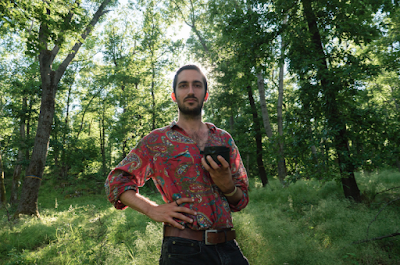conversations in ten questions 26 : Dávid Somló
In this interview we try to get to know Dávid Somló who is one of the international guests of the "From the world" section of the 2nd Bergama Theatre Festival in August 2021.
Ayşe Draz & Mehmet Kerem Özel
[The Turkish translation of this interview is published on unlimited]
What is the essence of performance in your opinion?
People are paying attention together in a space.
Do you believe in the transformative power of art? How?
It is quite tricky. Most of the time I think it does very little transformation, rather just creating comfort and entertainment, but sometimes it can be very cathartic and inspirational. But I guess it also depends on the willingness of the individual to be transformed.
The ‘how’ depends on the form of the art as well, but in performative genres for me it is working as a pointing finger, that says: you can do that, you can be like that as well, there is something over there, etc.
How do you think that this pandemic which humanity is facing at a global scale today will transform performing arts in the future?
I guess there are three main directions to keep on performing in case of an active pandemic: outdoors, intimate small scale performances (from very small groups to one-to-one) and streaming. What I saw was an overbearing dominance of streaming/digital forms which is a very wrong direction from my perspective. And while there was some growth in outdoor performances, in Hungary I haven’t seen much movement towards super intimate works, which is still something to explore further in these times.
How is the performing arts scene in your country handling/dealing with the challenging conditions posed by the pandemic?
I would like to skip this question.
Are there any artist whom you can describe as "my master", or any person whom you think influenced your art most? And if there is such an artist or person, who?
As my work is typically influenced by different disciplines and concepts, there is no one ‘master’. In terms of form and conceptuality I guess I am a descendant of the experimentalists of 60’s New York, the postmodern dance and John Cage. In my drone/ambient compositions, which are present in almost all of my works, my heroine is French composer Eliane Radigue, from whom I learned a lot about minimalism, constant change and the stretching of time. When I use more atmospheric/narrative context I think my main inspiration is David Lynch.
From my fellow artists, I’ve learned the most from my two most important collaborators: Hungarian performer/maker/dancer Imre Vass and Slovenian dancer/composer/dramaturg Ivan Mijaceveic. I had the luck to work with them together for my new solo piece ‘Overheard’ (premiering in October), and I felt in a dream team.
When you are working on a piece, what sources inspire you? Do dreams play a role in your works?
There are two main inspirations for me: For the content I always try to transform a lived or desired experience of mine, in a way that the audience can experience it themselves. For form I am inspired by other works, I pick little of this and that from a wide range of sources and work them together to create the experience I imagined.
When do you decide to give a title to a work you are working on if it already does not have one?
The titles are appearing quite early on, mostly from the start. It is also because I almost only start to work on quite developed concepts. A funny exception was with my band, Dorota: in a tour bus I misheard a journalist’s name from Szollár Domonkos to Solar The Monk and I immediately knew that those three words gonna be the title of our new album, after not having played a note together for 2 years. Later the whole concept of the album was built around this title.
As an interdisciplinary artist, what new perspectives do you think interdisciplinary production in arts provide to artists?
As with the internet, learning skills became much more available for anyone, it became almost obvious that people are picking up things from all around the place outside of a traditional curriculum of a discipline. So I think that interdisciplinary perspective is very much in the air, and a quite natural way of thinking at these times. Still sometimes it can be challenging, that in many situations in-between genres are harder to place, but I think in 5-10 years interdisciplinary forms will be way more accepted and understood.
As an artist who often works in a site-specific context, what is the essence of a site-specific piece for you?
The essence of site-specificity for me is to highlight the essence of a space, open up the perception of the audience and minimize the gap between them and the ‘here and now’
How was the experience of encountering the Bergama audience with your piece “Mandala”?
I had an exceptionally good time with ‘Mandala’ in Bergama. I was doing the piece in an ancient site the ‘Red Basilica’ which was a perfect venue for such a resonant and meditative piece and the audience responded very well. I felt that they were very engaged and dedicated in the participation and the experience.




Comments
Post a Comment